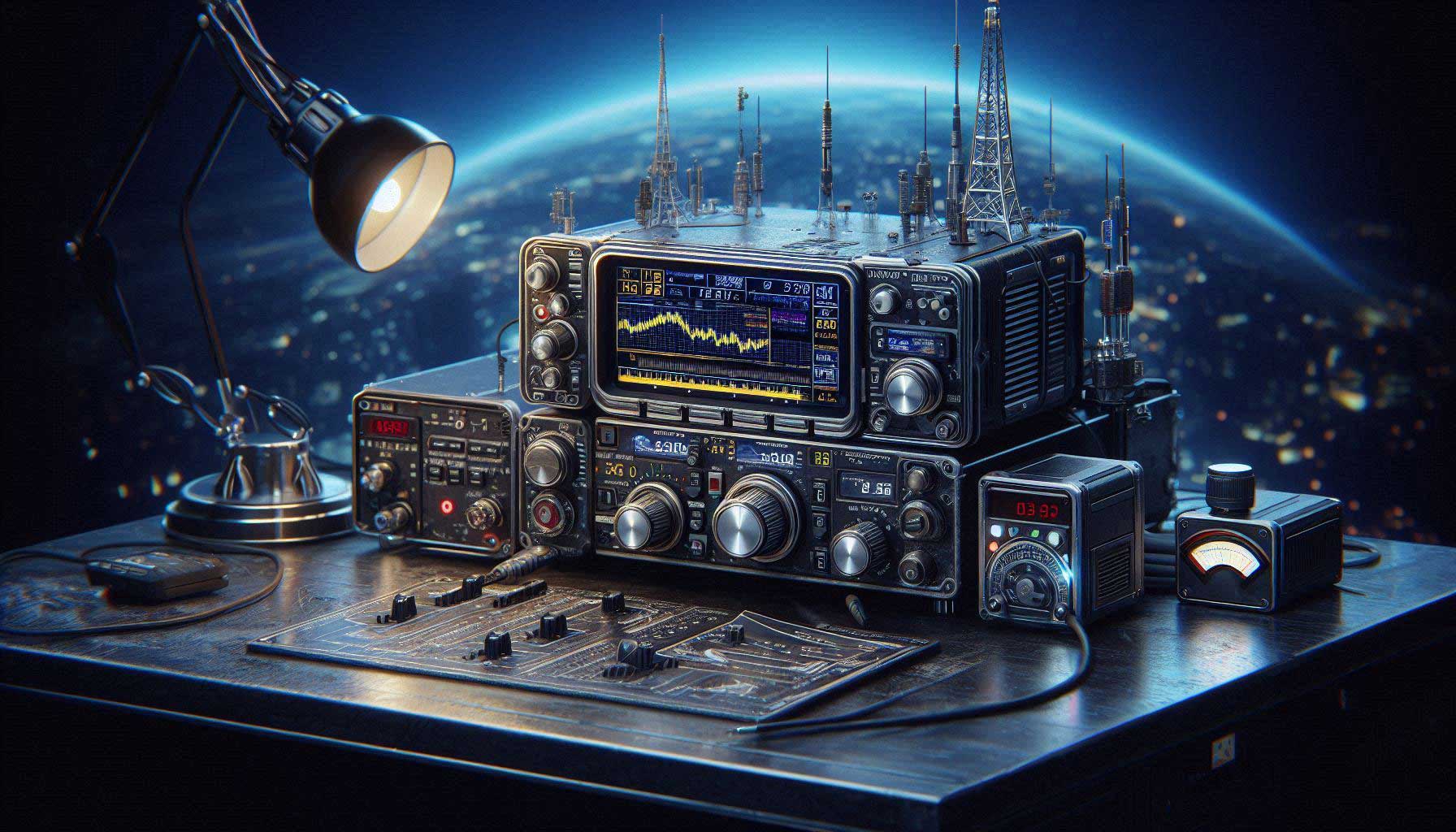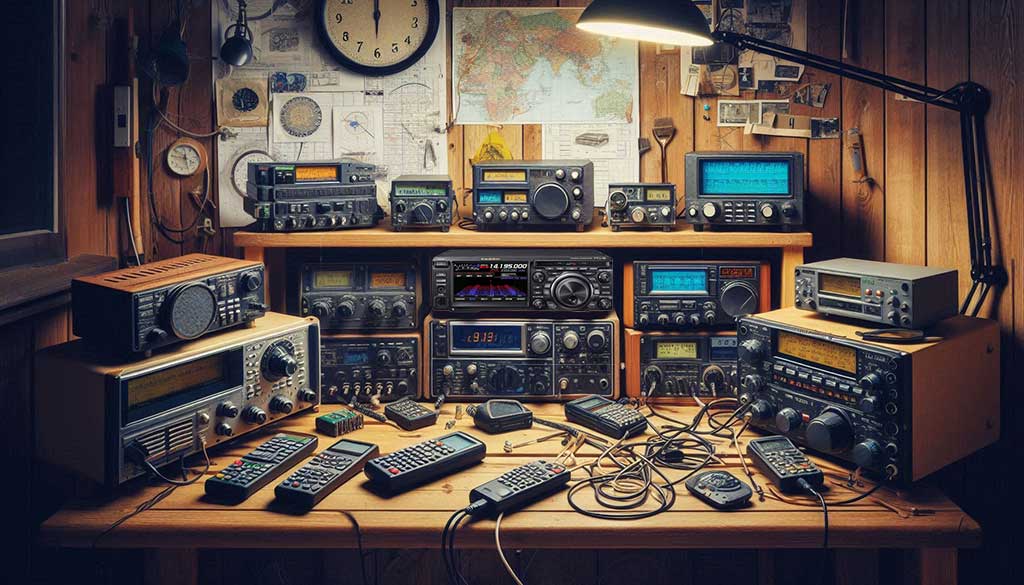Amateur radio, often referred to as HAM radio, is a hobby with a rich history and a vibrant community of enthusiasts worldwide. It offers a unique blend of communication, technical skill, and adventure that has captivated individuals for decades. Whether you’re a seasoned operator or someone just discovering this fascinating world, exploring HAM radio can be a deeply rewarding experience. You will probably ask yourself why “HAM”, what the hell does it mean? It means “Ham-fisted”, meaning having huge or awkward hands and therefore being clumsy at using the Morse key. Let’s dive a little deeper into the World of Amateur Radio
The Basics of Amateur Radio
At its core, amateur radio involves the use of designated radio frequencies for non-commercial purposes, such as personal communication, experimentation, and emergency communication. Unlike commercial radio services, amateur radio operators, known as “hams,” are licensed by their respective national regulatory bodies. These licenses ensure that operators understand radio theory, operating procedures, and regulations, promoting responsible and effective use of the radio spectrum.
Why Choose HAM Radio as a Hobby?
- Community and Camaraderie: One of the most appealing aspects of amateur radio is its strong sense of community. Hams often form local clubs, participate in events, and connect with fellow operators around the globe through radio contacts (“QSOs”). The hobby fosters friendships that transcend borders and cultures, united by a shared passion for radio communication.
- Technical Exploration: HAM radio enthusiasts have the opportunity to delve into various aspects of radio technology. From building antennas and experimenting with propagation to exploring digital modes and satellite communication, there’s no shortage of technical challenges and learning opportunities. Many hams enjoy the satisfaction of constructing their equipment or mastering advanced operating techniques.
- Emergency Preparedness: Amateur radio plays a crucial role in emergency communication. During natural disasters or other emergencies when conventional communication infrastructure may be compromised, hams provide vital communication links. This aspect of the hobby underscores its practical utility and reinforces the importance of ongoing training and preparedness.
Getting Started in HAM Radio

- Obtaining a License: The first step for anyone interested in becoming a ham radio operator is to obtain a license. That also means getting your callsign. Licensing requirements vary by country but typically involve passing an exam that tests knowledge of radio theory, regulations, and operating procedures. Study materials and practice exams are readily available online and through amateur radio clubs.
- Choosing Equipment: HAM radio equipment ranges from handheld transceivers for local communication to sophisticated base stations capable of worldwide contacts. Beginners often start with entry-level radios that offer versatility and ease of use. As operators gain experience, they may expand their equipment collection to support different bands and modes of operation.
- Joining the Community: Engaging with the amateur radio community is an integral part of the hobby. Local clubs and organizations provide opportunities for learning, participating in contests, and attending field days. Online forums and social media groups offer additional avenues for connecting with hams globally, sharing experiences, and seeking advice.
Diversity of Activities in HAM Radio
- Contesting: Radio contests challenge operators to make as many contacts as possible within a specified time frame. These events test skills in efficiency, strategy, and operating prowess across different bands and modes.
- DXing: DXing involves making long-distance contacts, often with operators in distant countries or remote locations. Pursuing DX contacts requires an understanding of propagation conditions and effective use of antennas and operating techniques.
- Digital Modes and Technology: HAM radio embraces digital modes such as FT8, VARAC, DMR, PSK31, APRS, and many more, enabling data transmission alongside voice communication. These modes expand the possibilities for global connectivity and experimentation with digital technology.
- Moon-bouncing, satellite communications, and many other weird stuff: Moon-bouncing (or Earth-Moon-Earth, EME) in amateur radio is a technique that involves bouncing radio signals off the moon to communicate with other radio operators on Earth. This method utilizes the moon as a passive reflector to transmit signals over very long distances, often across continents. Satellite amateur radio communication involves using orbiting satellites to relay radio signals between amateur radio operators, enabling long-distance communication that would be difficult to achieve through direct radio waves alone.
Technically all four mentioned categories are interrelated, but it is easier to understand them sorted this way. And of course, they are just the beginning of this wonderous hobby 🙂
Some useful links:
Conclusion: Embracing the Adventure
Amateur radio is more than just a hobby; it’s a gateway to exploration, learning, and global connection. Whether you’re drawn to the technical intricacies of radio technology, the camaraderie of the community, or the thrill of making contacts around the world, HAM radio offers something for everyone. As technology continues to evolve, so too does the landscape of amateur radio, ensuring that this timeless hobby remains vibrant and relevant in the modern age.
Joining the ranks of amateur radio operators opens up a world of possibilities—from participating in international events to contributing to emergency response efforts. It’s a hobby that rewards curiosity, ingenuity, and a passion for communication. So, get your callsign, pick up a radio, tune in to a frequency, and embark on your journey into the fascinating realm of amateur radio. The airwaves await your voice, data, or keying.
If You like this article maybe you would like to see some practical HAM work in DIY 250W Dummy load.
Thank you for reading.
![]()
E70BS

